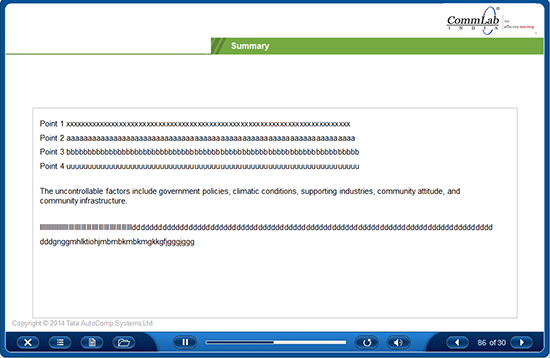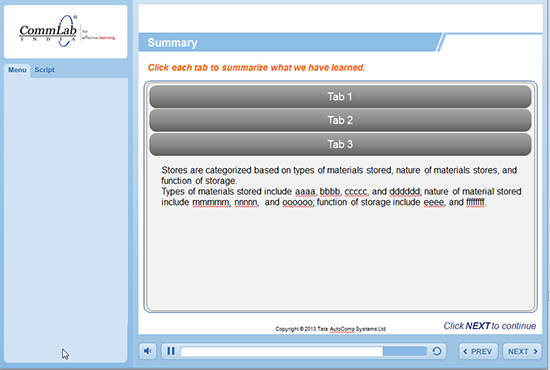Best Ways to Summarize E-learning Courses
This blog post shares some best ways to summarize eLearning Courses.

Right from school to the end of our education, we were always told to revise whatever we have learnt. Ever wondered why we were told so? It is because revising or summarizing helps us to recollect and reinforce what we have learnt. This same concept applies even to eLearning courses. Framing the summary properly benefits learners to get a complete gist or essence of any eLearning course. They enable the learners to sustain learning forever.
Here are the best ways to summarize eLearning courses:
Make them interactive:
Effective learning happens only when learners are involved in a course rather than going through a monotonous one-sided learning process. So instead of using static slides for summary, make them interactive. This makes the summary engaging and interesting.
Have a look at the two screenshots given below.


Which format of summary would you prefer? I am very sure that it is the first option, because it provides an interactive way for revising the complete course.
Align to learning objectives:
The ultimate aim of any course is to achieve the assigned learning objectives. So it is very good practice to align the summary in accordance to learning objectives. It helps and aids learners to revise exactly what is expected from them, on-the-job, after the completion of the course.
For example, for one of our clients, a leading automotive components conglomerate in India, we designed a course on “Introduction to Stores Department’, in which the learning objectives were, to define the objectives of Stores, list the types of Stores, and to state the management control in Stores.
The summary was accordingly framed as ‘Objectives of Stores’, ‘Types of Stores’, and ‘Management Control in Stores’, with each title assigned to one tab title, and the corresponding content in that tab.
Keep the content simple:
It is a known fact that too much of content onscreen always tends to reduce the interest of learning among learners. We all prefer simple, digestible, and properly arranged information. Use bullets, tables, lists, formatted texts instead of huge paragraphs and long sentences in your summary. Select only the most important and relevant content for summary. Always check summary against the original content, in case you have missed out on any important points.


These easy ways will help in making great and impressive summaries for eLearning courses. Have any more ways? Please do share the same!





